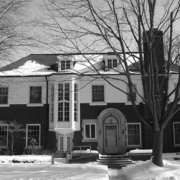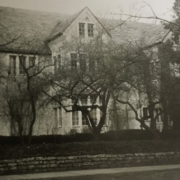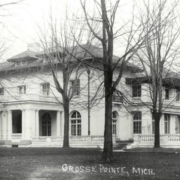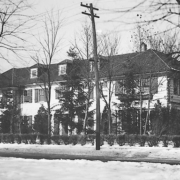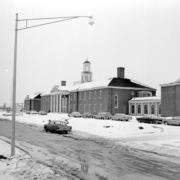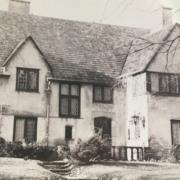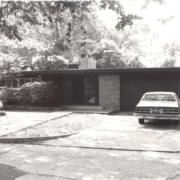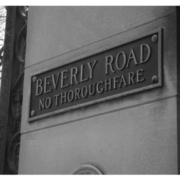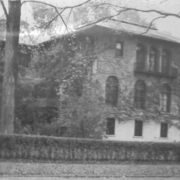Historical Architecture of Grosse Pointe – Welcome to 24 Beverly Road
Last week we visited Country Club Lane to explore three grand neighboring homes that were all completed in 1927 – numbers 381, 391, and 411 Country Club Lane.
This week we head to the magnificent Beverly Road, and to number 24 – designed by George W. Graves for Harriet N. Atterbury – it was completed in 1914. 24 Beverly Road is located at the end of this prestigious dead end street, next to the iconic gates that were designed by Albert Kahn. The 5,976 Sq ft asymmetrical English Revival home, with a slate hip roof, is set back from the road thus creating a large space in front and to the side of the house. The property has fabulous artistic detailing inside and out. The dominating exterior feature is the striking two-story oriel window (a form of bay window, which protrudes from the main wall of a building but does not reach to the ground) while the limestone-framed entrance way provides a nice contrast to the brick first story and stuccoed second story.
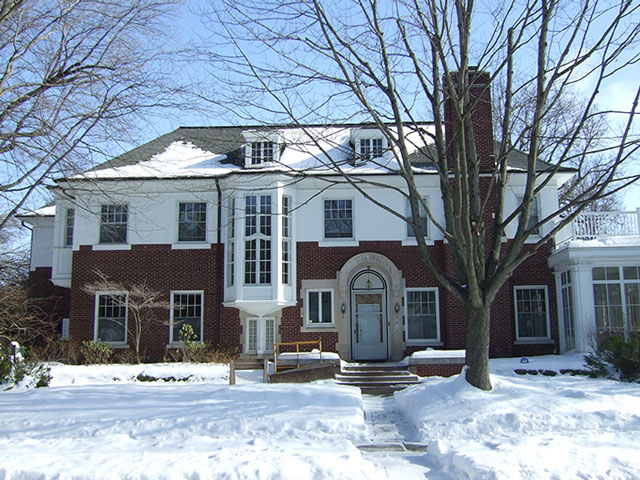
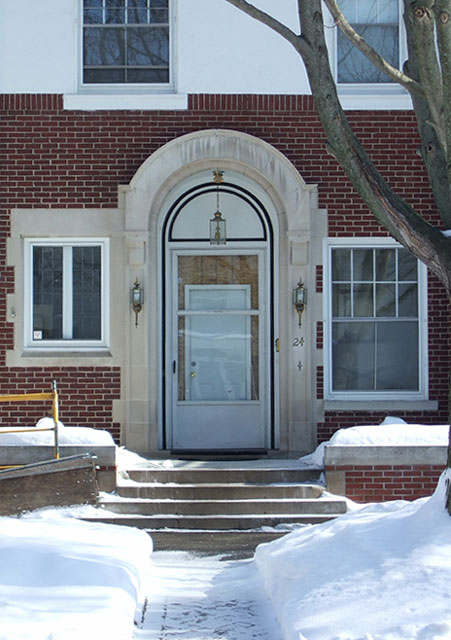
Once inside, the center piece of the seven bedroom home is the stately 21’ x 12’ sq ft foyer that features a 12ft high barrel ceiling, and traditional craftsmanship – carved wood paneling (part of which is detailed with leaves and grapes), along with a series of pocket doors designed ‘to disappear’, hidden latches, and a intricately carved balustrade. Source: An article in the Detroit Free Press, by Judy Rose. The main floor has 12 ft high ceilings throughout, along with hardwood floors. The 40’ x 20’ sq ft living room is home to one of the three over sized decorative fireplaces that can be found in the property (the other two fireplaces are located in the library, and the master bedroom). The article by Judy Rose explains how the 20’ x 20’ sq ft dining room was the perfect place – when the house was completed – to hang the stunning crystal chandelier – reported to be Waterford but never proven. Meanwhile, the main staircase travels up past the two-story oriel window to the second floor that has two-master suites along with five smaller bedrooms. Two of the bedrooms – on the original floor plan – were located towards the back of the house, close to the rear service stairs, for use by maids. Interior photos are courtesy of: Detroit Free Press.
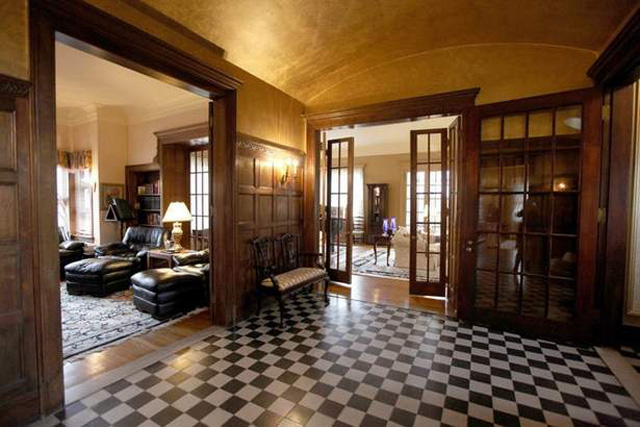

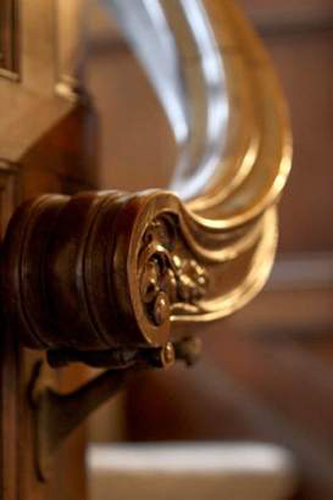
The original owner of the home is listed as Mrs. Harriet Nichols Atterbury. Born in 1864, Mrs. Atterbury was married to Allen W. Atterbury, vice-president and treasurer of the Detroit Steel and Casting Company. Prior to moving to Beverly Road it appears the couple resided at a property on McKinley Place. The Atterbury’s new home was completed shortly before Mr. Atterbury passed, in 1916. It is not clear if he ever lived at 24 Beverly or whether it was just his wife and daughter, Jane (born in 1887) that resided there. Harriet Atterbury was president of Cottage Hospital and president of the Detroit Civic Opera Company. She was also a musician and well known in several music and social circles (she passed in 1936). Her daughter Jane sold the home, in 1939, to Clifford Boles Longley, an attorney with Ford Motor Company. It appears Mr. Longley resided at 24 Beverly Road until 1945, at which time he sold the property to Emilie K. Kamper, the wife of Louis Kamper, the famed Detroit architect. That same year Ms. Kamper sold it on a land contract to Frank A. Miles, a prominent architect in Grosse Pointe. The Miles family resided at the property until 1953.
After selling 24 Beverly Jane Atterbury Peabody resided with her first husband, Witter J. Peabody at 304 University Place. After Mr. Peabody passed in 1938, she married Edward B. Caulkins, and they resided at 41 Hendrie Lane, a magnificent home designed by Wallace Frost.
The architect of 24 Beverly Road was George W. Graves. He was born in Buffalo, New York in 1876. After attending schools in Buffalo he later graduated from Buffalo Preparatory College with degrees in architecture and engineering. In 1906, Graves moved to Chicago where he resided for two years working as the head of the architectural department of the American Radiator Company. From there he moved to Detroit, and was employed for nearly twenty years at an architectural and engineering practice. Graves was by no means a prolific architect in Grosse Pointe, which makes his work on at 24 Beverly Road all the more special. It is one of few grand homes he completed for prominent families in the community between 1910 through to 1928. His other creations are located at:
- 330 Lincoln – completed in 1910, for Cameron B. Waterman, a lawyer, and inventor of the outboard motor.
- 17000 East Jefferson – completed in 1914 (demolished in the late 1970’s), for Oren S. Haws, secretary and treasurer at the O. S Lumber Company and the Grayling Lumber Company. You can read the full story by clicking here.
- 300 Lincoln – completed in 1915, for and Mrs. Edwin Hewitt Brown, a prominent family in Grosse Pointe. Mr. Brown was a senior manager in the Detroit office of the Aluminum Company of America.
- 333 Lincoln completed in 1918, for Fanny Judson (Knight) Butler, widow of William Addison Butler Jr., a prominent banker in Detroit, and president of the Mechanics’ Bank in Detroit. You can read the full story by clicking here.
- 1040 Bishop – completed in 1923
- 56 Roslyn Road – completed in 1928
Outside of Grosse Pointe Graves designed the Findlater Masonic Temple on Lafayette and the now demolished Masonic Country Club, located at the foot of Masonic Boulevard in St. Clair Shores. He was also heavily involved with the Freemasons.
24 Beverly Road is a sublime home, designed by an architect who was adept at designing individualistic styled homes for prominent clientele. On a street where so many special homes are located, it certainly stands out from the crowd. We will be continuing our story of Beverly Road next week.
*Photos courtesy of the Higbie Maxon Agney archives unless stated.
Written by Katie Doelle
Copyright © 2020 Katie Doelle

